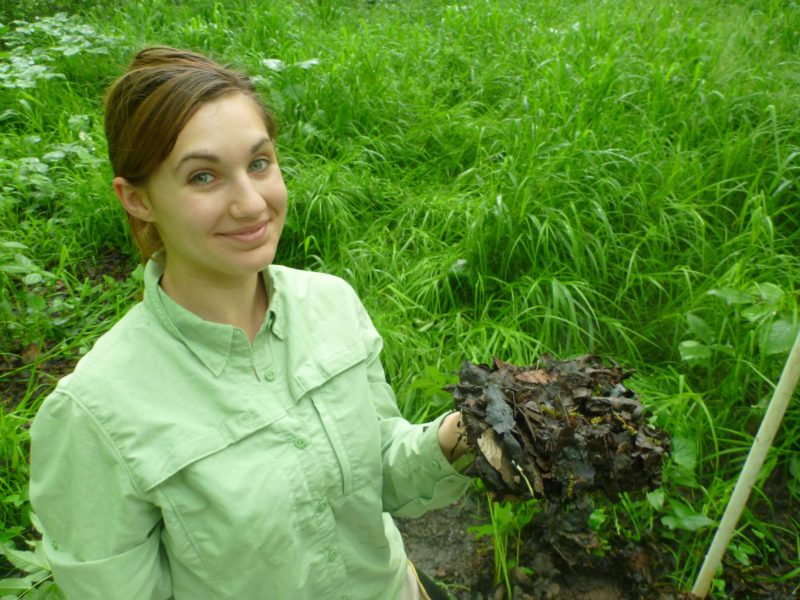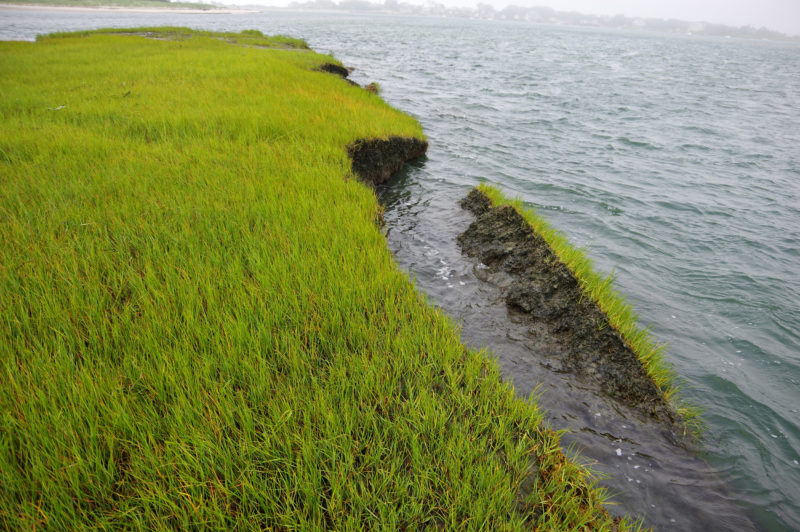Coalition expands response to salt marsh loss with first postdoctoral researcher
All around Buzzards Bay, coastal communities are seeing vital salt marsh ecosystems shrink, erode, and flood, due to the combined effects of pollution and sea level rise. Over the next two years, a new project between the Coalition and researcher Alice Besterman will tackle this problem from two angles: analyzing how fast we are losing Bay salt marshes, and testing a potential solution to help them.

Postdoctoral researcher Alice Besterman holds up a square of accumulated sediment in a marsh.
Besterman will be the first scientist to work with the Coalition for postdoctoral research, a form of continued professional training that scientists take on after earning a PhD. Besterman is currently completing her PhD research at the University of Virginia. Her two-year study, beginning in January, will work with Coalition science staff and local experts in salt marsh research and restoration.
One aspect of the project will test out a new restoration technique for salt marsh restoration called runneling. This technique involves creating a shallow groove in the surface of the marsh – a runnel – from places where seawater is collecting to the marsh’s edge, which helps drain it.
In many marshes, this water collects because sea levels are rising faster than the marsh can migrate inland. Plants in the central part of a marsh are not as well-adapted to sitting in salt water as plants on the marsh edge, so over time this flooding kills plants and leads to the marsh eroding.
Besterman’s project will evaluate whether runneling is a good option to prevent this erosion in Bay salt marshes. “Our primary goal is to create experimental runnels and assess the limits of where they’re effective, as well as any unforeseen outcomes,” she explained.

Large chunks of grass and mud are falling into the water on some salt marshes on the Westport River. (Image: Chris Neill)
The second part of the project will map salt marsh erosion around Buzzards Bay, using aerial imaging all the way back to the 1930s. By tracing the boundaries of selected marshes in the past and the present, Besterman will be able to calculate how fast we’re losing those wetlands.
Salt marshes are essential to the overall health of the Bay: they provide habitat to a number of fish, birds, and mammals, filter out pollution, and provide a coastal defense system against storms and rising seas. “They’re kind of the last bastion of protection, and they work much better than a hardened shoreline,” Besterman explains. As such, the Coalition is taking a close look at how we can protect salt marshes over the coming years, including long-term monitoring of over a dozen salt marshes around the Bay.
This project is supported by Southeast New England Program (SNEP) Watershed Grants. SNEP Watershed Grants are funded by the U.S. Environmental Protection Agency (EPA) through a collaboration with Restore America’s Estuaries (RAE). For more on SNEP Watershed Grants, see www.snepgrants.org